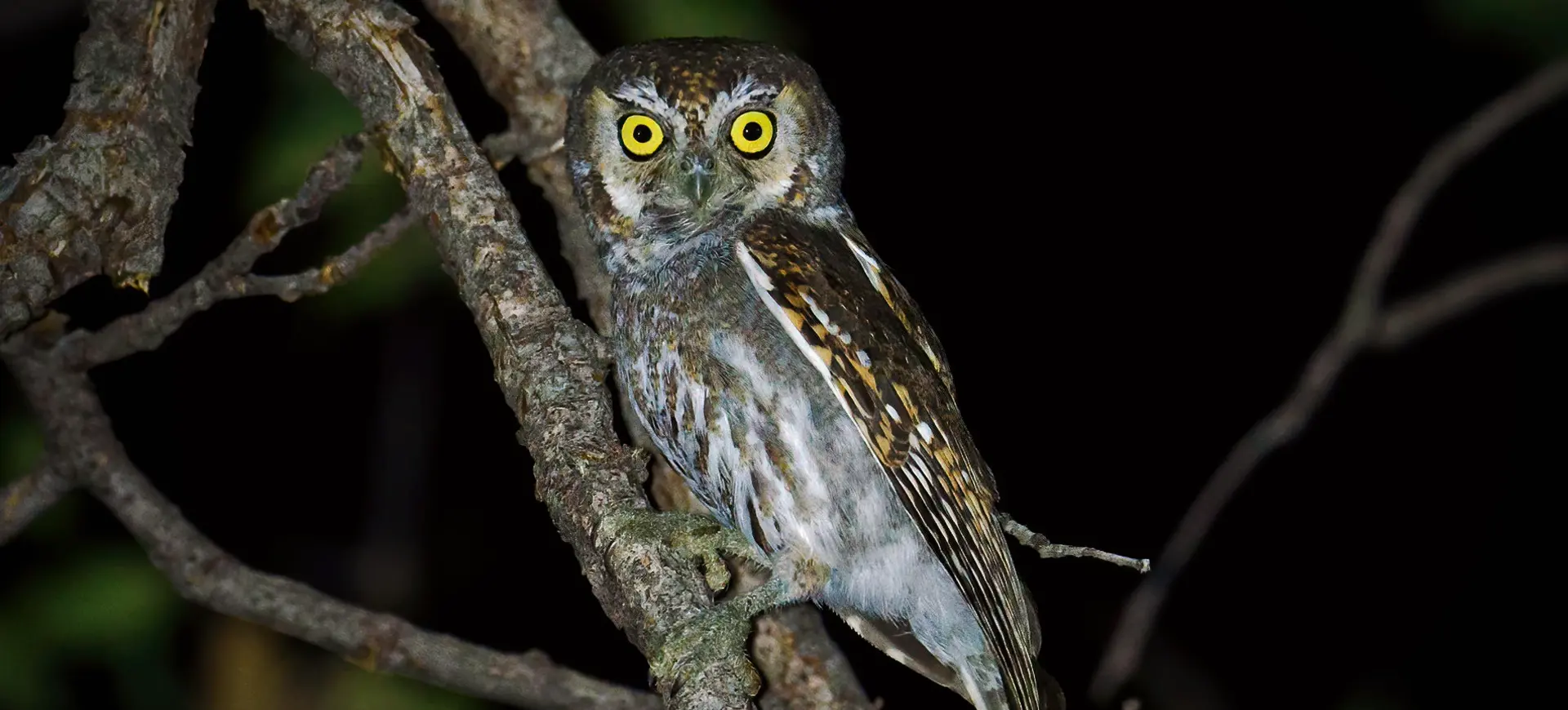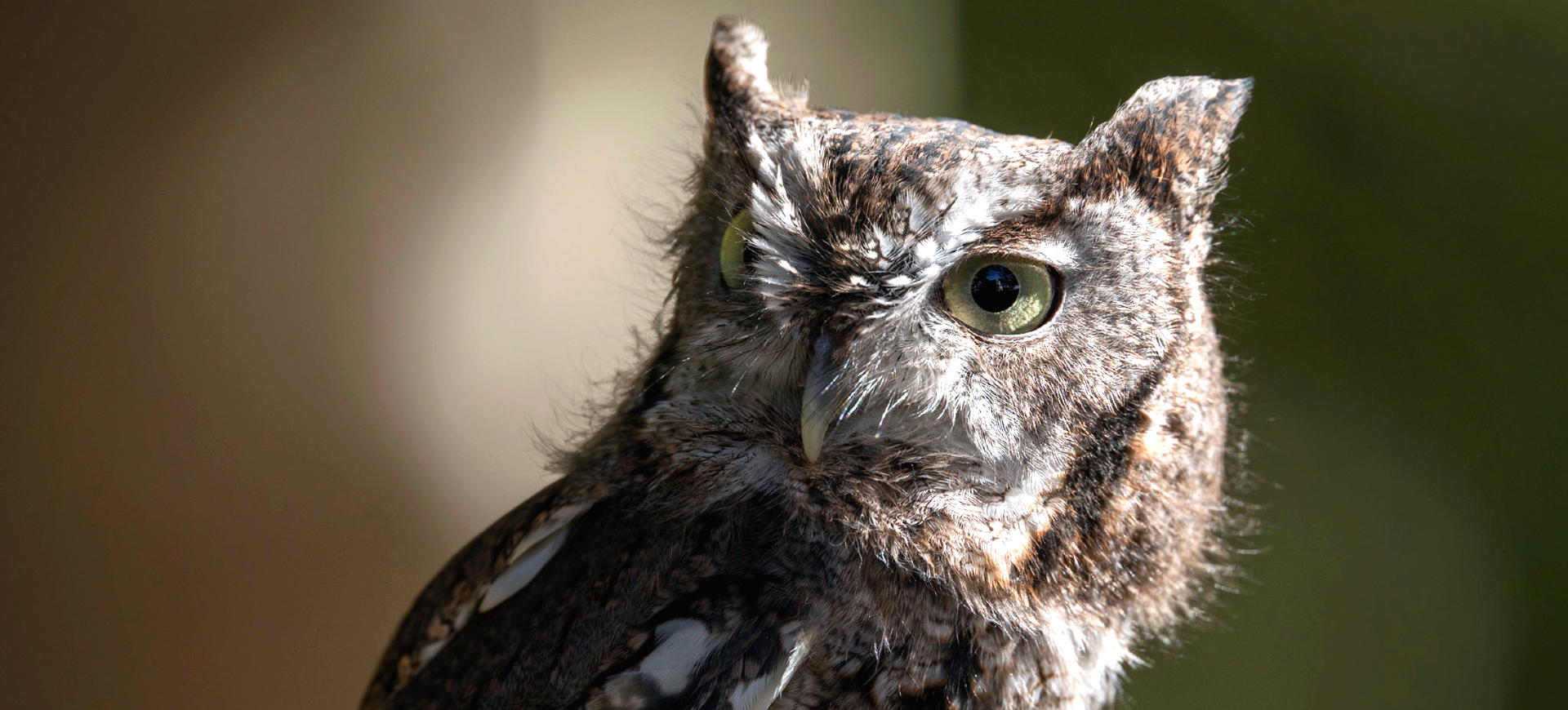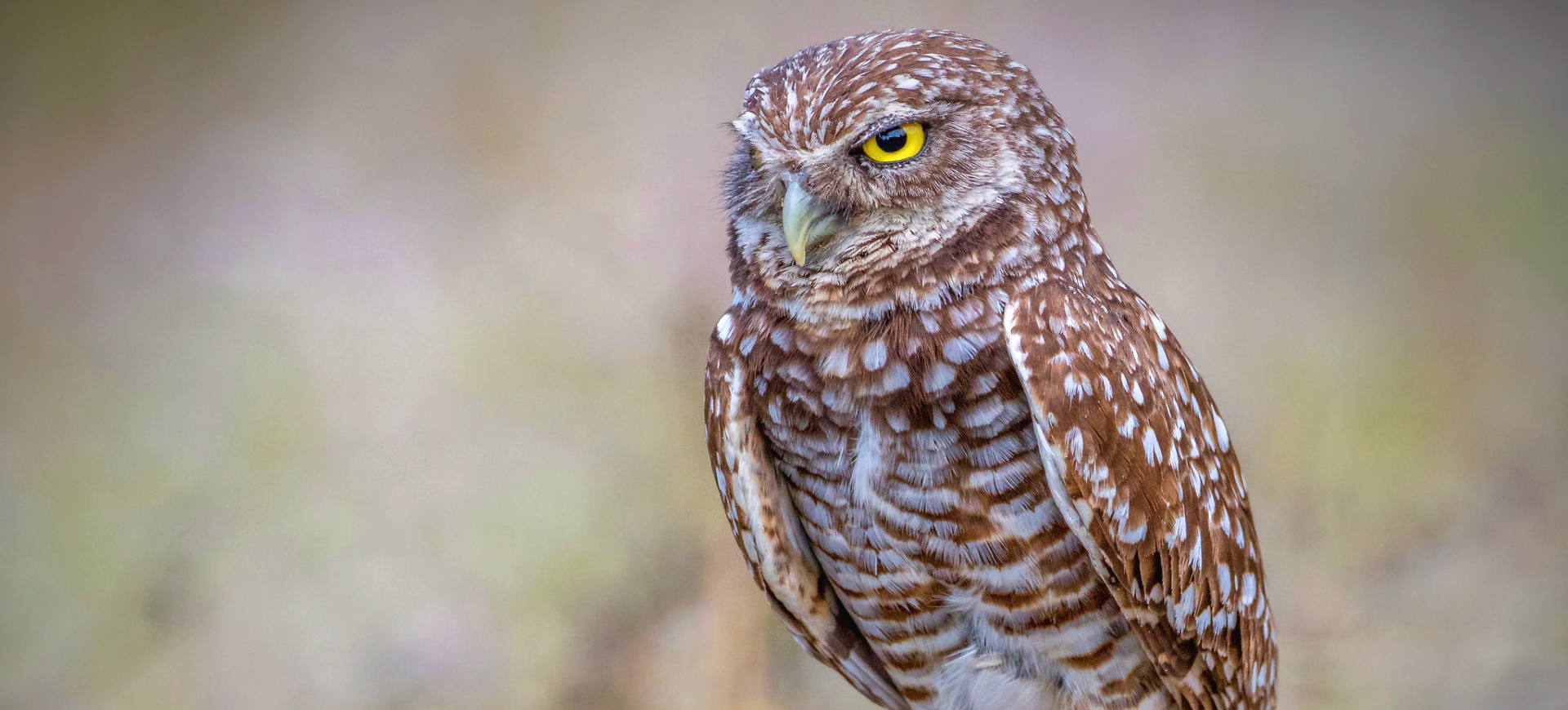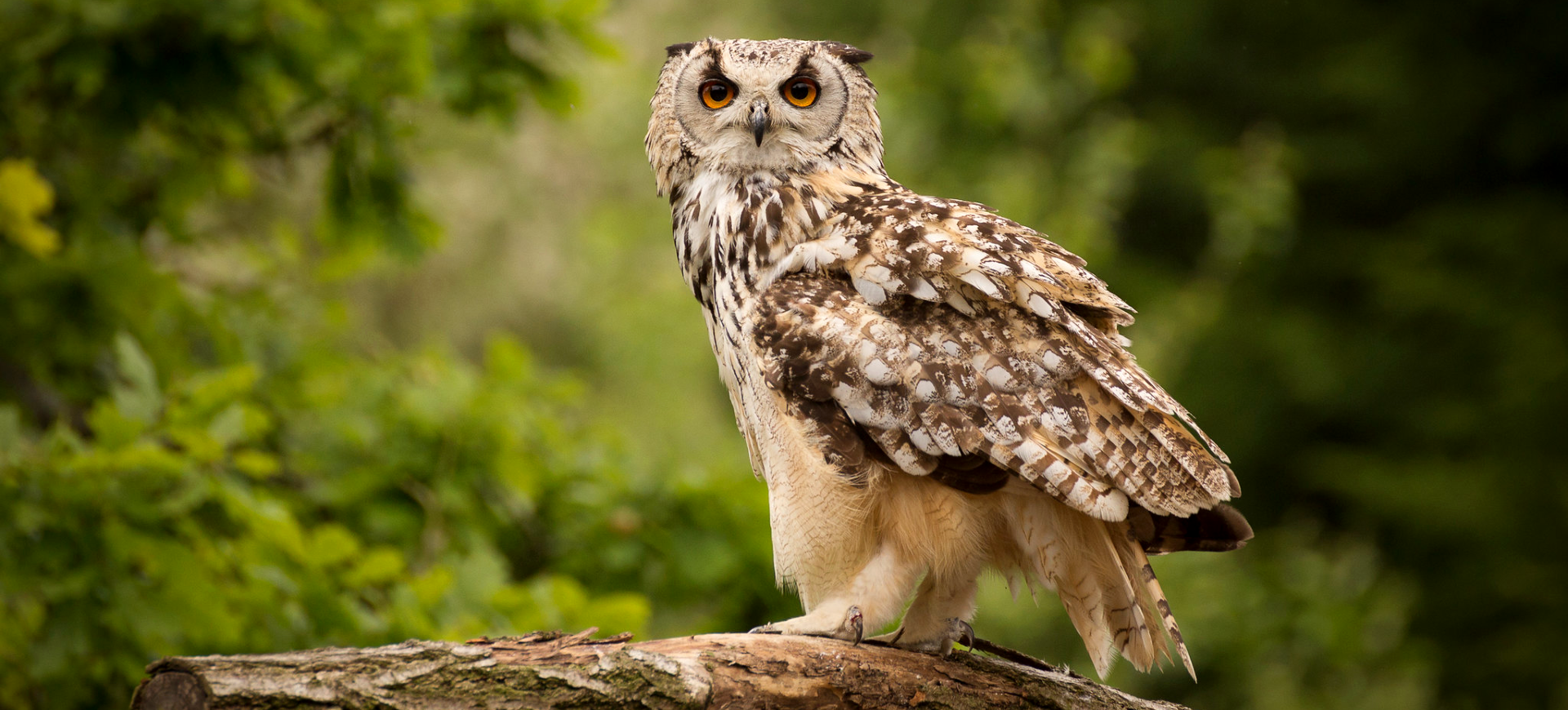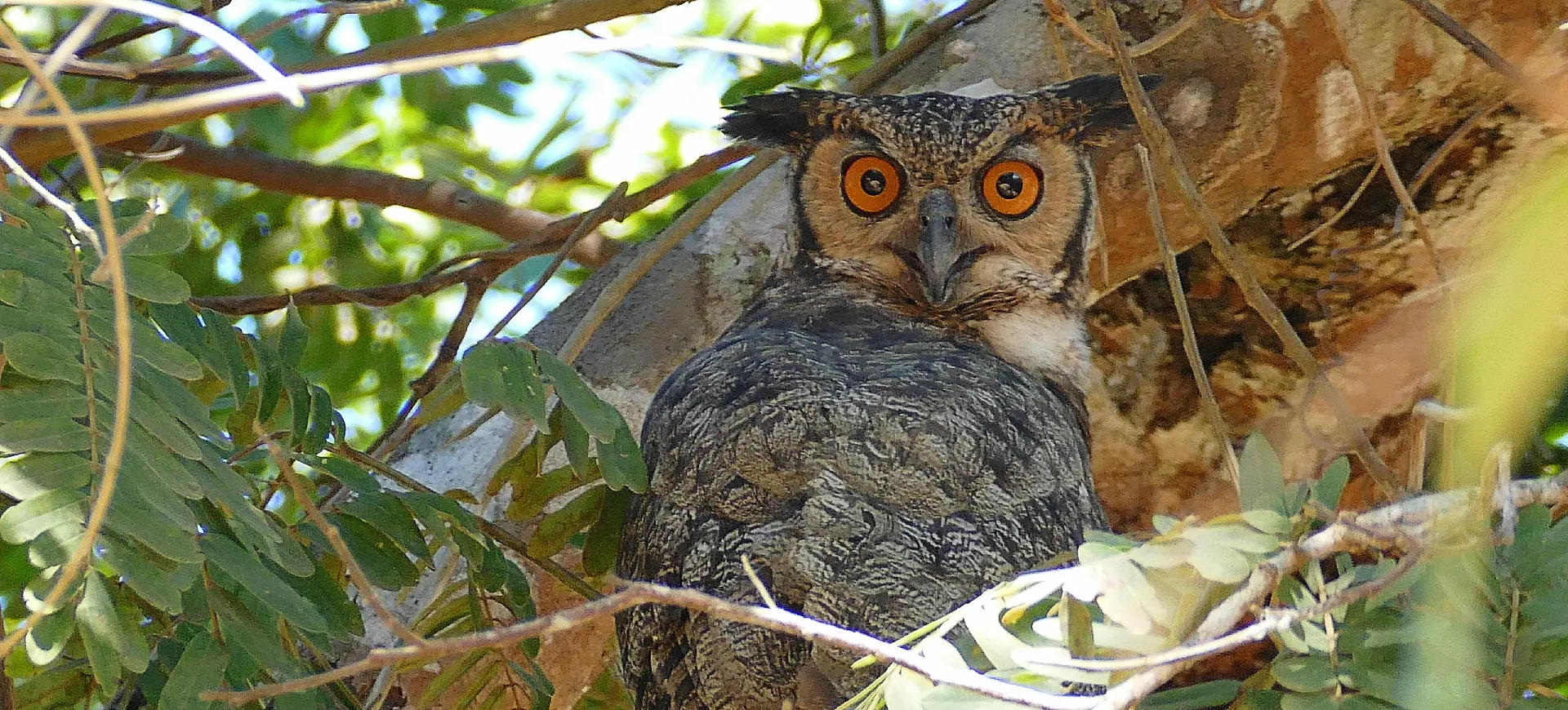Overview
The Snowy Owl, scientifically known as Bubo scandiacus, is a large and majestic bird of prey renowned for its striking white plumage. Native to the Arctic regions of North America and Eurasia, it is one of the most recognizable owl species. These birds are well-adapted to their cold habitats, with their thick feathers providing insulation against freezing temperatures. The snowy owl is also notable for its nomadic nature, often migrating long distances in search of food, particularly during the harsh Arctic winter.
The snowy owl exhibits sexual dimorphism, with females generally larger than males and displaying more black or dark brown dots on their otherwise white feathers. Males tend to become whiter as they age, while females retain the darker markings. These owls have large, rounded heads without ear tufts, and their bright yellow eyes are distinctive and striking. Their powerful, sharp talons and beaks are well-adapted for hunting, reflecting their status as top predators in their ecosystem.
Snowy Owls are primarily diurnal, unusual for an owl species, often seen hunting during the day. They are opportunistic feeders, preying on various animals, but their diet heavily relies on small rodents like lemmings and voles. In years of rodent abundance, snowy owls can raise large broods, while breeding may not occur in leaner times. Their hunting strategy involves patiently watching from a high perch and then swooping down to capture prey with their strong talons.
Taxonomy
Kingdom
Phylum
Class
Order
Family
Genus
Species
Type
Physical Description:
The Snowy Owl is one of the largest owl species, with a body length ranging from 20 to 28 inches (50 to 70 cm) and a wingspan of up to 4.8 to 5.6 feet (146 to 170 cm). The bird’s plumage is predominantly white, which provides excellent camouflage in snowy environments. Adult males are usually whiter than females, who display more dark barring and spots on their feathers. The dense feathering extends down to their toes, a feature that helps them conserve heat in their frigid habitats.
The facial disc of the snowy owl is less pronounced than in other owl species, and their yellow eyes are set against a contrasting white face. Their beak is short, curved, and powerful, adapted for tearing flesh. Despite their large size, snowy owls are agile fliers, with their broad wings enabling them to glide silently while hunting. Their plumage provides insulation and muffles the sound of their flight, allowing them to approach prey undetected.

Lifespan: Wild: ~10 years || Captivity: ~25 years

Weight: Male: 3.5 to 4.0 lbs (1.6 to 1.8 kg) || Female: 3.7 to 5.3 lbs (1.7 to 2.4 kg)

Height: Male & Female: 20 to 28 inches (50 to 70 cm)

Wingspan: Male & Female: 4.8 to 5.6 feet (146 to 170 cm)

Top Speed: 50 mph (80 km/h)
Characteristic:
Native Habitat:
The Snowy Owl is primarily found in the Arctic tundra, a vast and open landscape characterized by cold, harsh conditions. They prefer treeless areas and are well-adapted to the extreme cold, with their thick plumage offering necessary insulation. During the breeding season, they nest on the ground, often on a mound or boulder that offers a good vantage point over the surrounding terrain. The choice of nesting site is influenced by the availability of prey and the need for a clear line of sight to spot potential threats.
In the non-breeding season, Snowy Owls often migrate southward, traveling to Canada, the northern United States, Europe, and Asia. Their migration patterns are closely linked to the abundance of prey, particularly lemmings, in their Arctic breeding grounds. Some individuals, however, are known to be nomadic, wandering far from their usual range in search of food. This movement to different areas during the winter is essential for their survival, especially in years when Arctic prey is scarce.
Biomes:
WWF Biomes:
Biogeographical Realms:
Continents:
Countries:
Diet:
Diet & Feeding Habits:
The diet of the Snowy Owl primarily consists of small mammals, with a particular preference for lemmings. In areas where lemmings are abundant, these rodents can constitute up to 90% of their diet. They also prey on other small mammals, such as voles, mice, rabbits, and birds ranging from small songbirds to medium-sized geese and ducks. Their hunting strategy involves quietly observing from a perch or hovering and then swooping with their powerful talons to capture prey.
Snowy Owls have an excellent sense of hearing and keen eyesight, both crucial for detecting prey in their often dim and snowy habitats. They store surplus prey, particularly during times of abundance, by hiding it under snow or vegetation. This behavior is crucial for their survival when hunting is more challenging. Snowy Owls can eat up to 3 to 5 lemmings per day, a necessity given their large size and the energy demands of living in a cold environment.
Mating Behavior:
Mating Description:
Snowy Owls are generally monogamous, with pairs often forming during breeding. Courtship involves elaborate displays by the male, including aerial acrobatics, vocalizations, and offering food to the female. These displays strengthen the pair bond and ensure the female’s readiness for breeding. Once a pair bond is established, the couple builds the nest, with the female selecting the site and the male providing protection and food.
The female lays a clutch of 3 to 11 eggs, with the number depending on the availability of food, particularly lemmings. She incubates the eggs for about 32 days while the male feeds her and guards the nest. After hatching, both parents are involved in feeding and protecting the young. The chicks fledge at about 50 to 60 days old but may remain with their parents for several weeks before becoming independent.
Reproduction Season:
Birth Type:
Pregnancy Duration:
Female Name:
Male Name:
Baby Name:
Social Structure Description:
Snowy Owls are typically solitary, except during the breeding season. Outside of breeding, they are fiercely territorial and defend their hunting areas against other owls. During the breeding season, pairs form strong bonds and work together to raise their offspring. The social behavior of Snowy Owls is closely tied to the harsh conditions of their Arctic habitat, where cooperation between mates is essential for the survival of their young.
In winter, especially during irruptions, Snowy Owls may be seen in closer proximity to each other, particularly in areas with abundant food resources. Young owls, after fledging, become independent and disperse to establish their territories. The solitary nature of snowy owls is a key aspect of their survival strategy, allowing them to exploit the resources of their vast Arctic hunting grounds efficiently. Understanding the social dynamics of Snowy Owls is important for conservation efforts, particularly in managing their habitat and protecting nesting sites.
Groups:
Conservation Status:
Population Trend:
The global population of Snowy Owls is not well-documented, but it is known to fluctuate significantly in response to prey availability. These fluctuations can make it challenging to assess long-term population trends. The species is currently classified as Vulnerable by the IUCN Redlist, primarily due to concerns over habitat loss, climate change, and human disturbances. In years of low lemming populations, breeding success can be significantly reduced, impacting overall population numbers.
Conservation efforts for the Snowy Owl include habitat protection, research into their breeding and feeding ecology, and monitoring of population trends. Programs to reduce human disturbances in breeding areas are also important. Education and awareness campaigns can help mitigate potential conflicts with humans, especially in areas where the owls migrate during the winter. International cooperation is crucial for conserving this migratory species as they traverse various countries and regions.
Population Threats:
The primary threats to the Snowy Owl include climate change, which alters their Arctic habitat and affects the populations of their primary prey, lemmings. Human activities, such as industrial development and pollution, also pose significant risks to their habitat, both in the Arctic and the regions they migrate to. Collisions with vehicles and aircraft are common threats during migration. Additionally, though less common, illegal hunting and capture for the pet trade still present risks to individual birds.
Conservation strategies to address these threats include protecting critical habitats, regulating industrial activities in sensitive areas, and implementing measures to prevent collisions. Raising public awareness about the Snowy Owl’s plight and the importance of conserving its habitat is also essential to conservation efforts. Research into the impacts of climate change on the Arctic ecosystem and the Snowy Owl’s prey is critical for developing effective conservation strategies.
Conservation Efforts:
Conservation of the Snowy Owl involves protecting their Arctic habitat and ensuring safe migration routes. Efforts are underway to minimize disturbances and habitat destruction in their breeding areas. In wintering grounds, especially during irruption years, awareness campaigns help reduce the risks of vehicle and aircraft collisions. Research and monitoring Snowy Owl populations are crucial to understanding their ecology and devising effective conservation strategies.
Organizations and researchers are working to track Snowy Owl movements using satellite telemetry, providing valuable data on their migration patterns and habitat use. Efforts to combat climate change and its impacts on Arctic ecosystems are also vital for the species’ long-term survival. Conservationists advocate for sustainable practices in the Arctic and work to raise awareness of the challenges faced by Snowy Owls. Collaborative international efforts are necessary to protect this iconic species, given their wide range and the global nature of their threats.
Additional Resources:
Fun Facts
- Snowy Owls can rotate their heads up to 270 degrees, allowing them to have a wide field of vision.
- They are one of the few diurnal owl species, actively hunting both day and night.
- The Snowy Owl was featured as Hedwig in the Harry Potter series, increasing its popularity and public interest.
- In some Arctic regions, Snowy Owls are known to follow the movements of lemming populations, their main food source.
- The thick plumage of the Snowy Owl is among the densest of any bird species, providing insulation in Arctic temperatures.
- Unlike most owls, Snowy Owls often hunt in open spaces, relying on their keen sight and hearing to locate prey.
- They have been observed using a sit-and-wait hunting strategy, conserving energy in their cold environment.
- Snowy Owls have few natural predators due to their size and the remote nature of their habitat.
- During years of high lemming populations, Snowy Owl females may lay larger clutches of eggs.
- The iconic appearance of the Snowy Owl makes it a symbol of the Arctic wilderness and a subject of fascination in culture and art.









